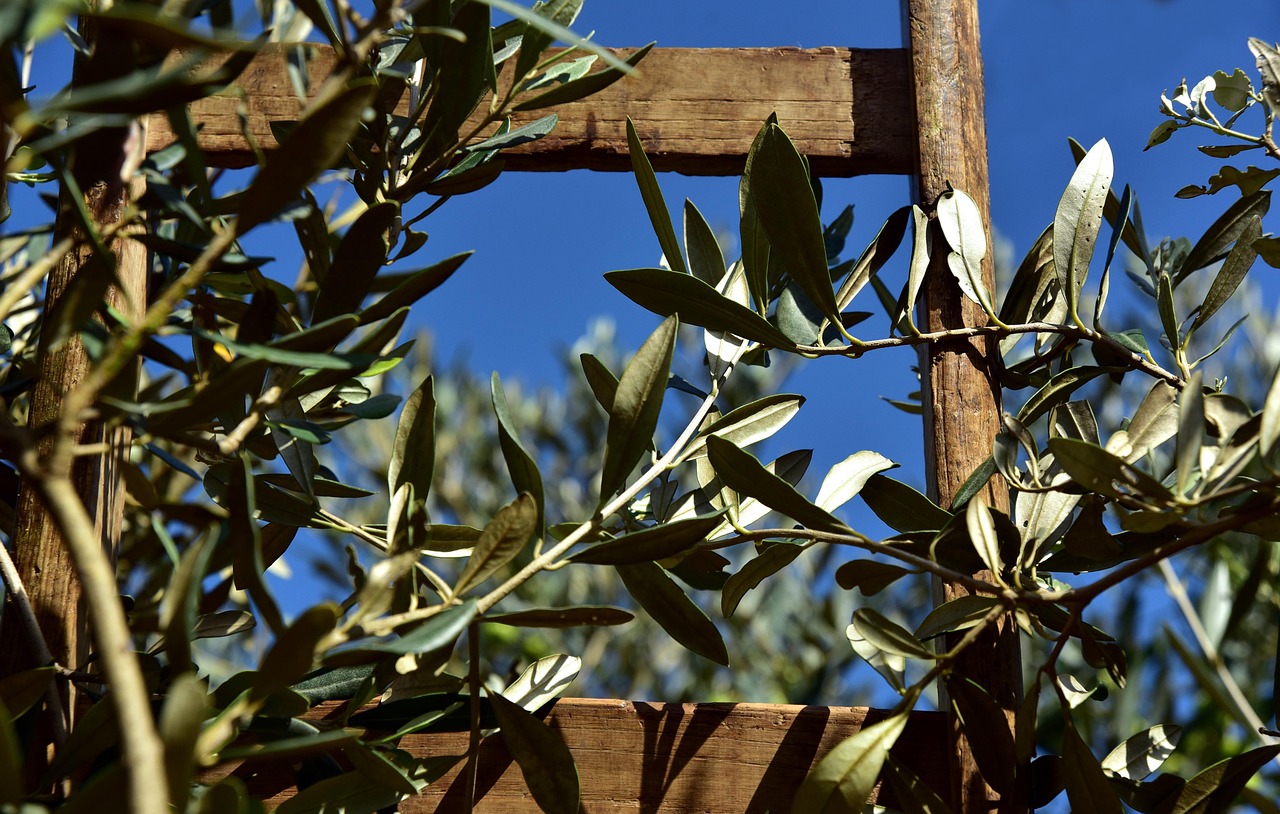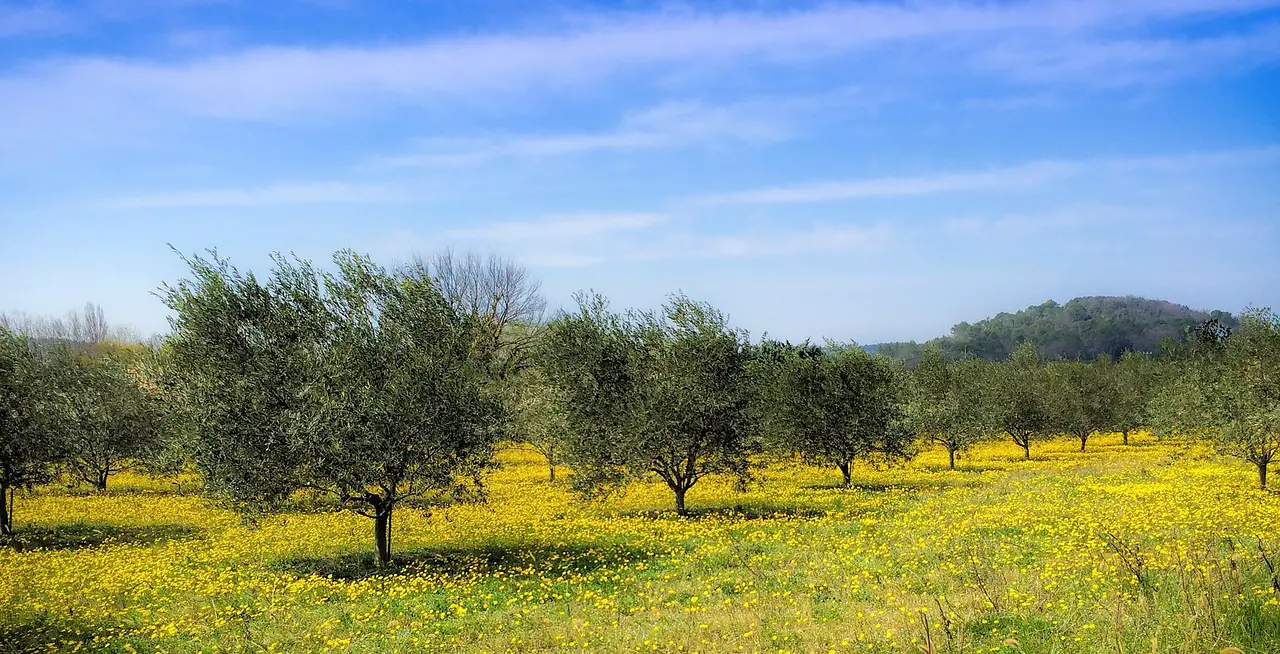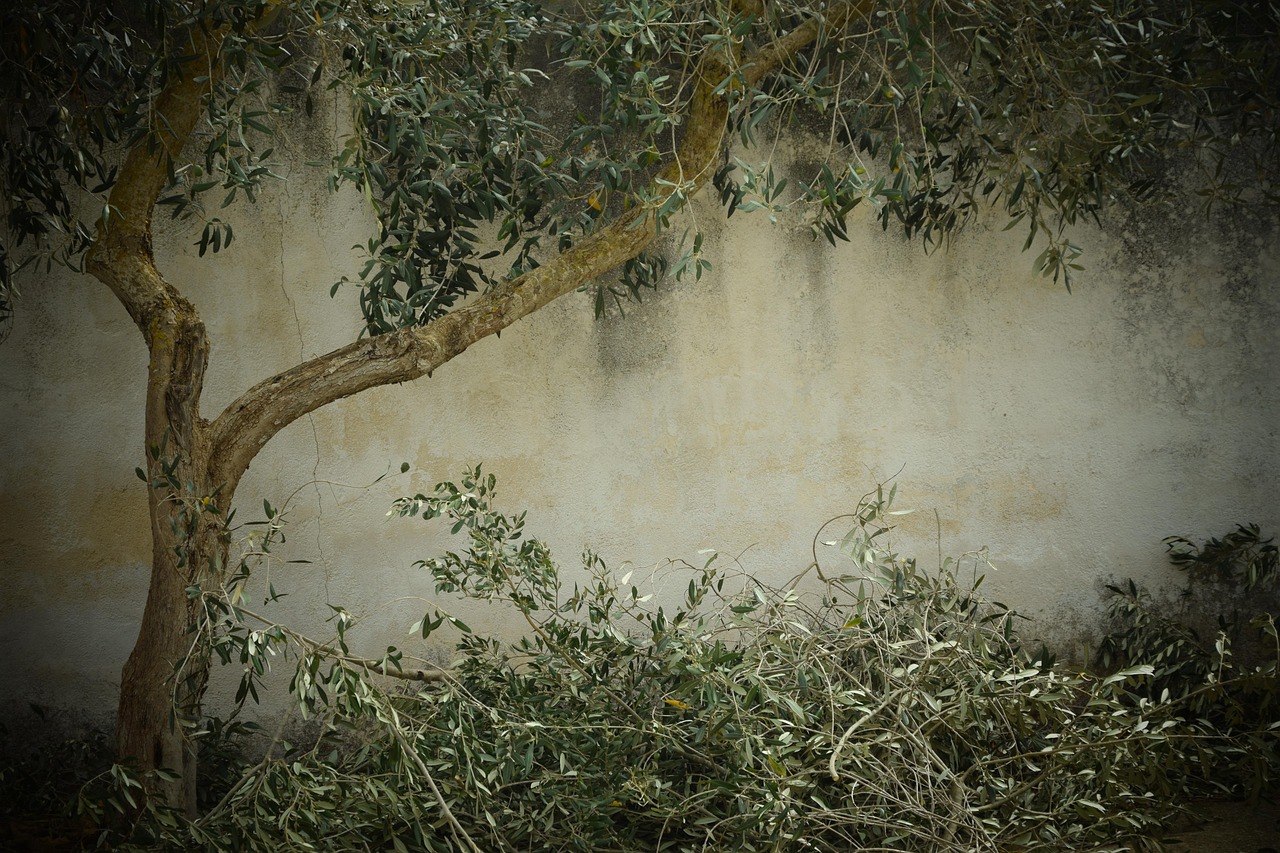Pruning olive orchards is essential for maintaining tree health and ensuring consistent olive oil harvests. Proper pruning techniques, such as removing dead or overcrowded branches, promote air circulation and sunlight penetration, which enhances fruit production. Regular maintenance also encourages the growth of new shoots, improving yield quality and ensuring a robust harvest season after season.
Olive orchard pruning is essential for achieving consistent olive oil harvests. Proper pruning enhances tree health, improves fruit quality, and maximizes yield, ensuring that olive trees remain productive throughout their lifespan.
Olive trees have been cultivated for thousands of years, primarily for their fruit and oil. Pruning is a crucial agricultural practice that directly influences the productivity of olive orchards. It involves the careful removal of specific branches to shape the tree and promote better growth. Through effective pruning techniques, farmers can ensure a steady supply of olives, which is vital for producing high-quality olive oil.

Understanding the principles of olive orchard pruning is essential for both new and experienced growers. Well-pruned trees not only produce higher yields but also have improved air circulation and sunlight penetration. This significantly contributes to the overall health of the trees, reducing the risk of diseases and pests.
Benefits of Pruning Olive Trees
The benefits of pruning olive trees extend beyond just aesthetics. Here are some key advantages:
- Improved Airflow: Pruning allows for better air circulation among the branches. This reduces humidity levels within the canopy, which can lead to fewer fungal diseases.
- Enhanced Sunlight Exposure: By removing excess branches, sunlight can reach more leaves. This is essential for photosynthesis and results in better fruit quality.
- Higher Quality Olives: Pruned trees tend to produce olives that are larger and have a higher oil content, improving the overall quality of the oil produced.
- Increased Yield: Regular pruning stimulates new growth, which can lead to higher yields in subsequent seasons.
- Tree Longevity: Proper pruning helps maintain tree health over time, allowing for a longer productive life.
Pruning techniques vary based on the age of the tree and its growth habit. Young trees require different methods compared to mature trees. Understanding these differences is crucial for effective management of an olive orchard.

Essential Pruning Techniques
There are several essential pruning techniques that olive growers should be familiar with. Each technique serves a specific purpose and can be adapted based on individual orchard conditions.
Crown Reduction
Crown reduction involves removing the upper portion of the tree to lower its height. This technique is particularly useful for older trees that may have become too tall for easy harvesting. By reducing the crown, growers can facilitate easier access to olives during harvest time.
Thinning Out
This method focuses on removing entire branches to improve airflow and light penetration. Thinning out is particularly beneficial for trees that have dense foliage. By allowing more light to reach the inner leaves, the tree can produce better-quality olives.

Heading Back
Heading back involves cutting back branches to a certain length to encourage bushier growth. This technique is often used in young trees to promote a more compact growth habit. A bushier tree allows for better accessibility during harvest and can lead to increased fruit production.
When to Prune Olive Trees
The timing of pruning is critical for optimal results. Generally, the best time to prune olive trees is during their dormant season, which typically occurs in late winter or early spring before new growth begins. Pruning at this time minimizes stress on the trees and allows them to recover quickly as they enter the growing season.
However, some growers may also choose to perform light pruning during the summer months. This can help manage tree shape and remove any damaged or diseased branches. Nevertheless, heavy pruning should be avoided during this period as it may negatively impact fruit set.

Factors Influencing Pruning Decisions
Several factors influence how and when growers prune their olive orchards. Understanding these factors can lead to better decision-making regarding orchard management:
- Tree Age: Younger trees may require different techniques compared to mature ones.
- Variety: Different olive varieties may respond better to specific pruning methods.
- Climate: Local climate conditions can affect growth patterns and optimal pruning times.
- Pest Pressure: High pest activity may necessitate more frequent pruning to remove affected branches.
Incorporating these practices will help ensure that olive orchards remain healthy and productive over the years. By understanding the importance of timely and effective pruning, growers can secure a reliable source of high-quality olives for oil production.
Tools and Equipment for Pruning Olive Trees
Having the right tools and equipment is essential for effective olive orchard pruning. The proper tools can make the process more efficient and ensure cleaner cuts, which are vital for tree health. Here are some commonly used tools:
- Hand Pruners: These are ideal for small branches and make precise cuts. They are essential for detailed work around delicate areas of the tree.
- Loppers: Loppers have long handles and are suitable for thicker branches that hand pruners cannot handle. They provide leverage for cutting larger limbs.
- Pruning Saws: For branches that are too thick for loppers, pruning saws are necessary. They come in various sizes and can be used for heavy-duty cutting.
- Chainsaws: In larger orchards, chainsaws may be required for significant reductions or removal of large branches. Safety precautions must be taken when using this equipment.
- Pole Pruners: These tools allow for cutting high branches without the need for a ladder. They are especially useful for taller olive trees.
Best Practices for Pruning Techniques
To achieve optimal results during pruning, it is important to follow best practices. These practices not only promote healthy growth but also enhance the quality of the harvest.
Making Clean Cuts
When pruning, it is vital to make clean cuts. Jagged cuts can lead to disease entry points. Here are some tips for making effective cuts:
- Use Sharp Tools: Ensure that all cutting tools are sharp before starting. Dull blades can crush branches instead of cutting them cleanly.
- Angle of Cut: Make cuts at a slight angle to allow water runoff, reducing the risk of rot.
- Avoid Tearing: Always cut at the branch collar, the swollen area where the branch meets the trunk, to avoid tearing.
Pruning Techniques Overview
Different techniques can be applied based on the specific needs of the trees. Here is a brief overview of some effective pruning methods:
- Selective Pruning: Focus solely on removing dead, damaged, or diseased branches while preserving the overall structure of the tree.
- Renewal Pruning: This method involves cutting back older branches to encourage new growth, thereby rejuvenating the tree.
- Maintenance Pruning: Regularly scheduled light pruning helps maintain tree shape and promotes healthy growth throughout the seasons.
The Role of Seasonal Changes in Pruning
The seasons greatly influence olive tree growth and development. Understanding these changes helps inform when and how to prune effectively.
Spring Growth
In spring, olive trees start to produce new growth and flowers. It is crucial not to prune during this time as it can remove potential fruit-bearing branches. Observing how much new growth develops can guide decisions regarding future pruning.
Summer Monitoring
Summer is an ideal time to monitor tree health and assess any pest issues. Light summer pruning can help manage tree shape without impacting fruit production significantly. Any dead or diseased wood should be removed promptly to prevent further damage.
Fall Preparation
As fall approaches, olive trees begin to prepare for dormancy. This is a good time to evaluate the overall structure of the tree and plan for winter pruning. Removing any problematic branches now can help ensure that the tree enters winter in a healthier state.
Pest Management During Pruning
Pest management is an integral part of olive orchard maintenance, particularly during pruning. Cutting branches can expose the tree to pests if not managed correctly. Here are some strategies to consider:
- Inspections: Regularly inspect trees for signs of pest infestations before and after pruning activities.
- Cleansing Tools: Disinfect pruning tools between trees to prevent the spread of diseases and pests.
- Pesticide Application: Consider applying organic pesticides if pest activity is detected during the growing season.
Post-Pruning Care
The work does not end after pruning. Post-pruning care is crucial for helping trees recover and thrive after their branches have been cut.
- Watering: Ensure that trees receive adequate water following pruning, as this helps reduce stress on the tree.
- Nourishment: Applying balanced fertilizers can support recovery and promote healthy new growth.
- Monitoring Growth: Keep an eye on new growth patterns to ensure they align with the goals set during pruning.
By implementing these practices, growers can enhance the health and productivity of their olive orchards, leading to consistent olive oil harvests year after year.
Understanding Olive Tree Varieties
Different varieties of olive trees have unique characteristics that influence their growth habits and pruning needs. Knowing these differences can help growers tailor their pruning techniques to maximize yield and fruit quality.
Common Olive Varieties
There are numerous olive varieties grown worldwide, each with specific traits. Understanding these traits is essential for effective orchard management:
| Olive Variety | Characteristics | Best Uses |
|---|---|---|
| Arbequina | Small, round fruit; early ripening; high oil yield. | Oil production; table olives. |
| Sicilian Nocellara | Larger fruit; rich flavor; good for both oil and table use. | Oil production; fresh eating. |
| Kalamata | Dark purple fruit; almond shape; robust flavor. | Table olives; oil. |
| Manzanilla | Small, green olives; sweet flavor; high oil content. | Table olives; oil production. |
Each variety may respond differently to pruning techniques, which is why understanding the specific needs of the variety in your orchard is essential for maximizing productivity and fruit quality.
Adapting Pruning Techniques to Variety
Adapting pruning techniques based on the olive variety can lead to better results. Here are some considerations for common varieties:
Arbequina
This variety benefits from a light to moderate pruning approach. Since Arbequina trees tend to produce fruit on spurs, excessive pruning can reduce yields. Focus on thinning out crowded areas to improve airflow and light penetration while preserving fruitful branches.
Sicilian Nocellara
Nocellara trees respond well to renewal pruning. Encouraging new growth will enhance the overall health of the tree and improve fruit quality. Aim to remove older branches and encourage the growth of younger ones that will bear fruit.
Kalamata
Kalamata trees require a more structured approach to pruning. This variety benefits from a balance between maintaining the tree’s shape and enhancing fruit production. Ensure that you maintain a good structure while selectively thinning branches.
Manzanilla
For Manzanilla trees, consider performing light pruning annually. This variety often produces olives on new growth, so maintain a balance between removing older branches and allowing enough new growth to develop for fruiting.
The Impact of Soil and Climate on Pruning Practices
The soil type and climate conditions in an olive orchard can significantly affect tree growth patterns and consequently influence pruning practices. Evaluating these factors is crucial for successful orchard management.
Soil Considerations
The type of soil in which olive trees are planted can dictate their growth habits. Here are some key points:
- Well-Drained Soil: Olive trees thrive in well-drained soils. In such conditions, proper pruning should focus on promoting airflow and minimizing moisture retention in the canopy.
- Heavy Clay Soil: Trees in heavy clay soil may exhibit slower growth. Pruning should be more conservative to avoid stressing the tree.
- Sandy Soil: Sandy soils promote quicker drainage, but they may require more frequent watering. In these conditions, regular pruning can help maintain healthy growth.
Climate Factors
Climate can also affect how and when pruning should be done:
- Hot Climates: In hotter regions, trees may experience more stress. Pruning should focus on maintaining shade and reducing the risk of sunscald on exposed branches.
- Cool Climates: In cooler areas, frost can damage new growth. Pruning before the frost season is critical to preventing damage to young branches.
- Humid Climates: High humidity levels increase the risk of fungal diseases. In these conditions, aim for aggressive thinning to improve airflow within the canopy.
The Timing of Pruning Based on Environmental Conditions
The timing of pruning is influenced by environmental conditions as well as varietal characteristics. Here are some considerations for optimizing pruning schedules:
Assessing Tree Health
Before initiating any pruning activity, assess the health of your olive trees. Look for signs of disease, pest infestations, or stress due to environmental factors. Trees that show signs of distress may require more immediate attention, along with targeted pruning to remove affected areas.
Seasonal Timing Adjustments
While late winter or early spring is generally ideal for pruning, adjustments may be necessary based on local climate conditions:
- If Early Frosts Occur: Delay pruning until after the last frost date to protect sensitive new growth.
- If Extended Drought Conditions Exist: Postpone heavy pruning until sufficient rainfall occurs to minimize stress on the trees.
- If High Pest Activity Is Detected: Conduct necessary pruning during late summer or early fall to manage pests effectively.
By tailoring both pruning methods and timing to the specific conditions of your olive orchard, you can enhance tree health and ensure productive olive harvests each season.
Maintaining Olive Orchard Health Year-Round
Beyond pruning, maintaining the overall health of an olive orchard involves a combination of practices that work together to ensure productivity. Regular monitoring, proper irrigation, and soil management are vital components of successful olive cultivation.
Regular Monitoring and Observation
Continuous observation of olive trees is crucial for early detection of any potential issues. Growers should regularly check for:
- Signs of Disease: Look for unusual leaf discoloration, spots, or wilting. Early intervention can prevent the spread of diseases.
- Pest Infestations: Monitor for signs of pests such as scale, aphids, or fruit flies. Traps can be useful in identifying pest populations.
- Growth Patterns: Observe how trees respond after pruning and during the growing season. This can help adjust future management strategies.
By keeping a close eye on the orchard, growers can make informed decisions that contribute to the long-term health of the trees.
Irrigation Management
Irrigation plays a critical role in the health and productivity of olive trees. Proper watering practices can prevent stress during dry periods and promote optimal growth. Here are some key considerations:
- Soil Moisture Testing: Regularly test soil moisture levels to determine when irrigation is necessary. Overwatering can lead to root rot, while underwatering can stress the trees.
- Drip Irrigation: Implementing a drip irrigation system can provide targeted and efficient watering, reducing water waste and promoting healthier root development.
- Timing of Irrigation: Watering in the early morning or late afternoon can minimize evaporation and ensure that trees receive adequate moisture.
Effective irrigation management contributes to stronger trees and a more fruitful harvest.
Soil Management Practices
A healthy soil environment is essential for olive orchards. Good soil management practices include:
- Soil Testing: Regular testing helps assess nutrient levels and pH balance. Adjustments can be made based on specific deficiencies.
- Organic Matter Addition: Adding compost or organic mulch improves soil structure and provides nutrients, promoting beneficial microbial activity.
- Crop Rotation: Implementing crop rotation with cover crops can enhance soil fertility and reduce pest pressure.
Healthy soil conditions lead to vigorous tree growth and better olive production.
Utilizing Technology in Olive Orchard Management
The integration of technology in olive orchard management can drastically improve efficiency and productivity. Here are a few ways technology can assist growers:
Precision Agriculture Tools
Precision agriculture tools allow growers to monitor various factors influencing tree health. These tools include:
- Sensors: Soil moisture sensors can provide real-time data on moisture levels, helping optimize irrigation schedules.
- Drones: Drones can be used for aerial surveys to monitor tree health and identify areas needing attention from a broader perspective.
- Data Analytics Software: Software solutions can analyze historical data, allowing growers to make informed decisions about pruning schedules and irrigation practices.
Mobile Applications
Many mobile applications are available that cater specifically to orchard management. These apps can help track:
- Pest Management: App features may include pest identification tools and treatment reminders.
- Harvest Schedules: Keep track of optimal harvest times based on variety and environmental conditions.
- Growth Tracking: Record tree growth patterns and other observations to adjust future management practices accordingly.
Utilizing these technologies not only makes management easier but also leads to more informed decisions that improve orchard performance.
Final Thoughts
Pruning is just one aspect of a comprehensive approach to olive orchard management. By understanding the specific needs of different olive varieties, adapting pruning methods, and maintaining overall orchard health through monitoring, irrigation, and soil management, growers can significantly enhance their yields.
The integration of technology further enables efficient management practices, allowing for precise interventions that lead to better outcomes. As growers continue to adapt their strategies based on environmental factors and advancements in agricultural science, the potential for achieving consistent and high-quality olive oil harvests remains promising.
Ultimately, a well-pruned tree is just the beginning. Continuous learning and adaptation in olive orchard management will pave the way for thriving orchards capable of producing exceptional olives year after year. With dedication and strategic planning, growers can ensure sustainable success in their olive cultivation endeavors.
